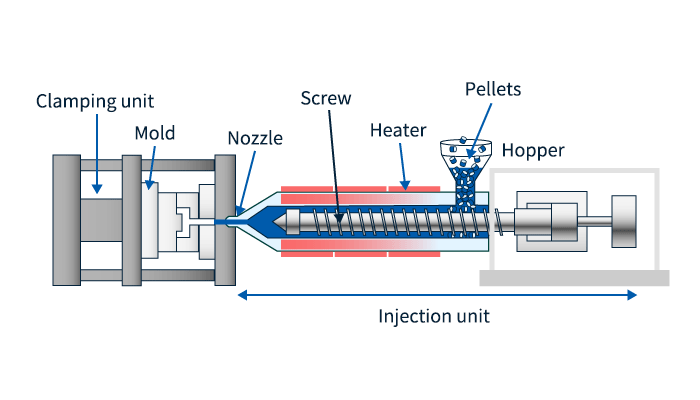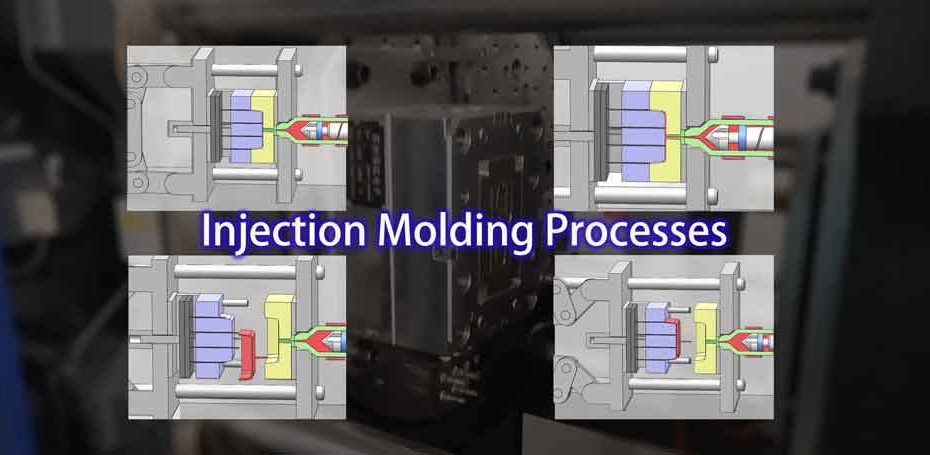Exactly How Plastic Injection Molding Drives Effectiveness in Automation
Exactly How Plastic Injection Molding Drives Effectiveness in Automation
Blog Article
Recognizing the Basics of Plastic Shot Molding Procedures
Plastic injection molding offers as a cornerstone of modern production, supplying a methodical technique to producing complex components with accuracy. This process not just incorporates the essential actions of melting and injecting materials into molds yet also includes a nuanced understanding of numerous affecting aspects, such as temperature and stress. As sectors significantly demand efficiency and top quality, the intricacies of this approach come to be extra important. Exploring these essential components can expose how even small modifications can result in significant renovations in production outcomes, questioning about the capacity for development in this well established procedure.
What Is Plastic Shot Molding?
Plastic shot molding is an extensively made use of manufacturing procedure that transforms thermosetting and polycarbonate products into accurate and intricate forms. This method is preferred for its ability to produce high quantities of the same parts with outstanding accuracy, making it an essential technique in numerous markets, including vehicle, durable goods, and clinical devices.
The process entails thawing the chosen plastic product and injecting it into a mold under high stress. The mold and mildew, created to the specifications of the desired part, enables the molten plastic to materialize as it cools and solidifies. Once the product has actually hardened, the mold and mildew is opened up, and the completed element is ejected.
Plastic injection molding uses a number of advantages, consisting of reduced waste, consistency in manufacturing, and the ability to include complex styles that may be testing with other making techniques. Furthermore, it sustains a broad series of products, each offering special properties that can be customized for particular applications. As markets proceed to introduce, plastic shot molding remains at the center, making it possible for the development of innovative items that fulfill developing customer demands.
The Shot Molding Refine
The shot molding procedure is an advanced method that entails numerous key stages to create high-quality plastic elements. Originally, plastic pellets are fed right into a heated barrel where they are melted right into a viscous fluid. This molten plastic is then injected under high pressure right into a precision-engineered mold and mildew, which forms the material into the wanted form.
When the mold is loaded, the plastic is permitted to solidify and cool down, taking the form of the mold dental caries. Air conditioning time is important, as it influences the cycle time and the last residential or commercial properties of the shaped part. After enough cooling, the mold and mildew opens up, and the completed part is expelled using ejector pins.

Materials Made Use Of in Shot Molding
Numerous materials can be made use of in the injection molding process, each offering unique buildings that satisfy details applications. The most commonly used materials include thermoplastics, thermosetting plastics, and elastomers.

Thermosetting plastics, like epoxy and phenolic resins, undergo a chemical modification during the curing process, resulting in an inflexible, stringent framework. These materials are perfect for applications calling for high warm resistance check my source and architectural integrity, frequently used in electrical insulators and auto components.
Elastomers, consisting of silicone and rubber-based products, give versatility and resilience. Their one-of-a-kind buildings make them ideal for applications that require flexibility, such as gaskets and seals.
Additionally, specialized products like bio-based plastics and compounds are acquiring traction for their ecological benefits and boosted efficiency attributes, widening the range of shot molding applications in various sectors. Comprehending the homes of these materials is important for picking the appropriate type for certain tasks.
Benefits of Shot Molding
Injection molding stands apart as a very reliable production procedure that supplies many advantages for generating intricate get rid of precision. One of the most considerable advantages is the capability to create detailed designs that would certainly be difficult or impossible to attain with various other approaches (Plastic Injection Molding). The procedure allows for limited resistances and detailed functions, ensuring high-grade elements
In addition, shot molding is recognized for its rapid production abilities, making it an excellent choice for high-volume manufacturing. When the mold is developed, components can be generated quickly, minimizing lead times and increasing total efficiency. This effectiveness not just lowers production prices however also offers an one-upmanship out there.
The versatility of materials used in shot molding further improves its appeal. A variety of thermoplastics and thermosetting polymers can be employed, permitting makers to pick products that ideal satisfy their certain needs, including warmth, adaptability, and strength resistance.
Furthermore, the procedure minimizes waste, as excess material can typically be recycled and recycled. This sustainability aspect adds to a decreased ecological impact, making injection molding a responsible manufacturing choice. In general, the benefits of injection molding make it a recommended technique for many markets.
Variables Impacting Product High Quality
While numerous aspects can influence Look At This product high quality in injection molding, understanding these components is essential for accomplishing ideal results. Key facets consist of product selection, refining specifications, and mold design.
Material option plays an important function, as various polymers exhibit unique homes that affect flowability, toughness, and thermal stability. Inadequate product choice can bring about defects such as warping or incomplete dental filling.
Handling specifications, including stress, cycle, and temperature time, must be diligently managed. Variations in these settings can lead to inconsistencies partially measurements and surface area finish. Excessively high temperatures may create degradation of the polymer, while inadequate pressure can result in short shots.
Mold and mildew layout is just as important, as it determines the circulation of the molten plastic and the cooling process. Poorly developed molds may result in irregular cooling rates, causing dimensional mistakes and residual tensions.

Conclusion
Finally, plastic injection molding acts as an essential manufacturing procedure that enables the effective production of high-grade parts. Proficiency of the injection molding process, consisting of the understanding of products and the influence of numerous aspects on item quality, is crucial for achieving optimal outcomes. The benefits of this technique, such as cost-effectiveness and style versatility, further highlight its value across numerous markets, strengthening its status as a preferred selection for high-volume manufacturing.
Plastic injection molding offers as a cornerstone of modern-day production, giving a systematic approach to producing complex elements with precision.Plastic injection check out this site molding uses a number of benefits, consisting of reduced waste, consistency in production, and the capacity to integrate complex layouts that might be challenging with various other manufacturing methods (Plastic Injection Molding). As sectors proceed to introduce, plastic injection molding stays at the leading edge, enabling the development of advanced products that satisfy advancing customer needs
The injection molding procedure is a sophisticated technique that includes numerous essential phases to generate premium plastic parts.In final thought, plastic shot molding serves as an essential production process that allows the efficient manufacturing of high-quality parts.
Report this page